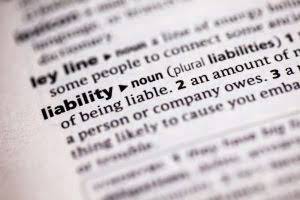Trade discount definition
Content

Other business within the industry that use the manufacturers products rarely pay list price for them. Instead, the manufacturer gives the wholesaler or retailer a discount on each purchase or a percent off of the list price. The company selling the product will record the transaction at the amount after the trade discount is subtracted. For example, when goods with list prices totaling $1,000 are sold to a wholesaler that is entitled to a 27% trade discount, both the seller and the buyer will record the transaction at $730. There will not be a general ledger account entitled Trade Discount.
Is sales discount an income?
The sales discounts are directly deducted from the gross sales at recording in the income statement. In other words, the value of sales recorded in the income statement is the net of any sales discount – cash or trade discount.
It has always been urged by the traders that it is not properly comparable to a trade discount. One of the great arguments which has been going on for many years is as to whether this is a trade discount or not. Tara received her MBA from Adams State University and is currently working on her DBA from California Southern University.
Pros of Free Trade
A seller may give more trade discounts to one seller for the same product and quantity than to another seller. Revenue is recorded at the net amount appearing on the invoice, with a corresponding increase to accounts receivable or cash. In case when both the discounts are allowed to the customer, in a transaction, then the trade discount is allowed on the list price first, then cash discount is allowed on the net amount payable.
In contrast, a cash discount is allowed to the customers only on cash payments. This step entails adding up all the bits of trade discounts from all the bands provided by the wholesaler/manufacturer. A business that gives higher trade discounts is more popular among the resellers. Suppose Company A sells 100 mobiles to Company B. The mobile has a retail price of $100, but Company A gives a 20% trade discount to Company B. So, the final price is $80, or $8,000 for 100 mobiles.
Recording Sales Having a Trade Discount
Moreover, unless and until it is early and instant payment, the invoices and debit notes do not mention the cash discounts. And these are raised at the collectible amount, net of trade discounts, if any. The cash discount is thus a future event and is applicable at the time of payments.
- So the relief is in form of reduced retail price such that the profit that the buyer will make will be pegged on the difference between the prevailing market price and the selling set by the wholesaler/manufacturer.
- Trade discount is allowed on both cash and credit transactions.
- The use of trade discounts allows a company to vary the final price based on each customer’s volume or status.
- Trade discounts are also based on customer loyalty and vendor relationships over time.
- 1)Increased Sales volumes -the seller is in a position to make more sales hence the volumes increase.
There was no trade discount, no reckoning twelves as thirteens, no commission, and no credit of any kind whatever. We do not think you can call it a trade discount, and we must hand you this money. She had also asked for a trade discount from the local undertaker, for providing him with plenty of business. The entry shown in the article is for purchase after adjustment. The customer would save $20,000 by taking advantage of the trade discount. The articles and research support materials available on this site are educational and are not intended to be investment or tax advice. All such information is provided solely for convenience purposes only and all users thereof should be guided accordingly.
Trade Discount Definition
Mr. X purchased goods from Mr. Y for a list price of $8000 on April 1st, 2018. Mr. Y allowed a 10% discount to Mr.X on the list price for purchasing goods in bulk quantity. Further, a discount of $500 was allowed to him for making an immediate payment. Cash discount will have an impact on journal entries of the company when the customer eligible for the discount. The cash discount will become the expense of the company as it will reduce the accounts receivable previously record.

The https://www.bookstime.com/ may be stated as a specific dollar reduction from the retail price, or it may be a percentage discount. The trade discount customarily increases in size if the reseller purchases in larger quantities (such as a 20% discount if an order is 100 units or less, and a 30% discount for larger quantities). A trade discount may also be unusually large if the manufacturer is trying to establish a new distribution channel, or if a retailer has a great deal of distribution power, and so can demand the extra discount. Once the discount is charged, the net amount which the customer has to pay is determined. Further, a trade discount is offered in case of both cash sales and credit sales.
Accounting for a Trade Discount
Trade Discount is the discount which the manufacturers or the wholesalers offer to their customers, on a fixed percentage basis on the catalog price of the goods, at the time of sale. It is used as a tool by the manufacturers to attract customers, increase sales volume, and encourage bulk purchases. Therefore, with the increase in the volume of purchases, the rate of discount also increases in general. A trade discount is different than asales discountbecause a trade discount does not have the same restrictions as a purchase discount.
In order to encourage customer payment, the company offers a term payment of 5% 10/Net 30. It will provide 5% cash discount on early payment within 10 days. The customer paid the full amount after 5 days to enjoy the cash discount. Please calculate the cash discount and prepare a journal entry.
What Does Trade Discount Mean?
Trade discounts are used to mask the true invoice price from competitors, simplify pricing in brochures and catalogs, as well as reward high volume resellers. Manufacturers, suppliers, vendors and businesses often increase their goodwill in the business environment through the use of trade credit. Goodwill is the value or attractive force a company generates with its customers by offering low prices, good customer service, or high quality goods or services in the economic marketplace. Trade discounts can also help improve goodwill if companies offer bigger discounts to businesses or individuals, giving repeat business to the supplier or vendor. 2)Good Reputation-if a firm is cheap through offering trade discounts, then its reputation advances. The consumers even those who purchase to re-sale will be saying good about the company such as the company that cares the people-this increases market share. Trade discount is an important tool that helps a company to boost its sales and market share.

This ensures that customers do not know the discount that others are getting. Such a practice is positive for a business and helps to increase profitability as well. A trade discount is applied instantly, even before the closure of the transaction. The Invoice and Debit Notes etc., are raised at net prices only. This is why it does not become a part of an accounting transaction and does not get any accounting record as well. The following examples reflect situations where trade discounts are often used. These examples will provide insights into how trade discounts work.
A discount on the list price granted by a manufacturer or wholesaler to buyers in the same trade. Trade Discount is provided to increase sales in bulk quantity, while Cash Discount is given to the customers to encourage early and prompt payment. Cash Discount recorded at the debit side of the cash book as discount allowed, whereas discount received appears at the credit side of the cash book.
What are the 2 types of discounts?
The two types of discount offered are trade discount and cash discount.

Cevapla
Want to join the discussion?Feel free to contribute!